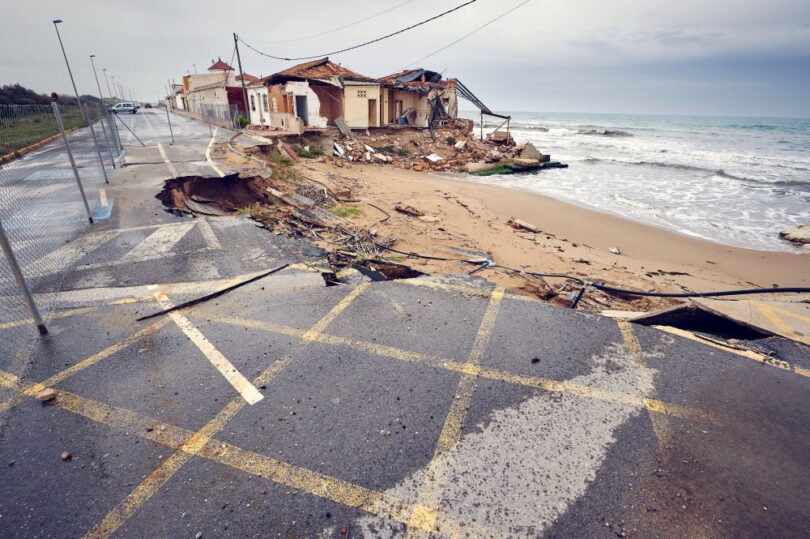When Mother Nature’s fury strikes, it can leave behind a trail of destruction that requires billions to mend. Billion-dollar weather and climate disasters are not just headline grabbers—they are significant events that impact economies, communities, and lives. In this blog post, we’ll explore these colossal catastrophes and their implications, helping you understand why they matter and what can be done to mitigate their effects.
From hurricanes to wildfires, understanding these disasters will give you insight into the role climate change plays in amplifying their frequency and intensity. We’ll also discuss the human stories behind the statistics and the measures being taken to prepare for and respond to these devastating events.
The Growing Frequency of Costly Disasters
Natural Disasters on the Rise
The frequency of weather and climate disasters has been steadily increasing over the past few decades. According to the National Oceanic and Atmospheric Administration (NOAA), the United States experienced 22 separate billion-dollar weather and climate disasters in 2020 alone. This surge is not just a coincidence but a worrying trend that underscores the urgency of addressing climate change.
The rise in these disasters is linked to several factors, including global warming, deforestation, and urbanisation. Each of these elements contributes to the changing patterns of weather, making extreme events more common and severe. For instance, warmer ocean temperatures can fuel stronger hurricanes, while dry conditions can lead to more intense and widespread wildfires.
The Economic Impact
The economic toll of these disasters is staggering. In 2020, the combined cost of billion-dollar disasters in the United States alone reached approximately $95 billion. These costs include damages to homes, infrastructure, and businesses, as well as expenses related to disaster response and recovery efforts. The financial burden often falls on taxpayers and insurance companies, leading to increased premiums and public debt.
Beyond the immediate costs, these disasters can have long-term economic repercussions. Communities may struggle to rebuild, businesses might close permanently, and local economies can suffer lasting damage. The ripple effects can be felt far beyond the disaster zone, affecting national and even global markets.
The Human Element
While the financial costs are significant, the human cost is immeasurable. Lives are lost, families are displaced, and communities are forever changed. The psychological impact of experiencing a catastrophic event can be profound, leading to long-term mental health issues such as post-traumatic stress disorder (PTSD).
Understanding the human element is crucial for developing effective disaster response strategies. Providing support for affected individuals and communities, from mental health services to financial assistance, is essential for recovery and resilience. Efforts to build stronger, more prepared communities can help mitigate the impact of future disasters.
Hurricanes Hitting Hard and Fast
The Power of Storms
Hurricanes are among the most destructive natural disasters, with the power to obliterate entire cities. Hurricane Katrina, which struck in 2005, remains one of the costliest hurricanes in US history, with damages estimated at over $160 billion. The storm caused widespread flooding, particularly in New Orleans, leading to a humanitarian crisis of unprecedented scale.
Hurricanes form over warm ocean waters, drawing energy from the heat. As they move towards land, they bring with them high winds, heavy rain, and storm surges that can inundate coastal areas. The intensity of hurricanes is often measured using the Saffir-Simpson Hurricane Wind Scale, which categorises storms from Category 1 (least severe) to Category 5 (most severe).
Preparing for the Worst
Preparation is key to minimising the impact of hurricanes. Early warning systems, evacuation plans, and robust infrastructure can save lives and reduce damages. For example, the National Hurricane Center (NHC) provides forecasts and warnings that help communities prepare for impending storms.
Investing in resilient infrastructure, such as building codes that require structures to withstand high winds and elevated homes in flood-prone areas, can also make a significant difference. Community education and awareness programmes can ensure that residents know how to respond during a hurricane, from securing their homes to following evacuation orders.
Lessons Learned
Past hurricanes have taught us valuable lessons about disaster response and resilience. Hurricane Harvey in 2017 highlighted the importance of having adequate emergency services and resources in place. The storm caused severe flooding in Houston, Texas, and surrounding areas, prompting a massive rescue operation.
The recovery process emphasised the need for coordinated efforts between federal, state, and local agencies. It also underscored the importance of community involvement and support systems, such as volunteer organisations and non-profits, in providing immediate relief and long-term assistance.
Wildfires Raging Across Continents
The New Normal
Wildfires have become more frequent and intense, with devastating consequences. The 2019-2020 Australian bushfire season, known as “Black Summer,” burned over 46 million acres, destroyed thousands of homes, and resulted in the deaths of at least 33 people. The economic cost was estimated at $103 billion AUD, making it one of the costliest natural disasters in Australian history.
Climate change plays a significant role in the increasing frequency of wildfires. Higher temperatures and prolonged droughts create ideal conditions for fires to ignite and spread. Human activities, such as deforestation and land development, also contribute to the risk by altering natural fire regimes and increasing the availability of fuel.
Fighting Fire with Technology
Advancements in technology are helping to combat wildfires. Drones equipped with thermal imaging cameras can detect hot spots and monitor fire progression in real-time. Satellite imagery provides valuable data for predicting fire behaviour and assessing damage. These tools enable firefighters to respond more effectively and allocate resources where they are needed most.
Prescribed burns, where controlled fires are set intentionally to reduce fuel loads, are another important strategy. By removing excess vegetation, these burns can prevent larger, more destructive wildfires from occurring. Firebreaks, or cleared areas that act as barriers to slow the spread of fire, are also commonly used.
Community Resilience
Building community resilience is essential for coping with wildfires. This includes creating defensible spaces around homes, ensuring that properties are clear of flammable materials, and using fire-resistant building materials. Public education campaigns can raise awareness about fire safety practices and encourage residents to develop evacuation plans.
Collaboration between government agencies, firefighting organisations, and local communities is vital for effective wildfire management. By working together, these groups can implement comprehensive fire prevention and response strategies that protect lives, property, and natural resources.
Floods Swamping Cities and Countryside
Water Everywhere
Floods are another common and costly natural disaster. They can occur due to heavy rainfall, storm surges, or overflowing rivers and dams. In 2011, severe flooding in Thailand caused an estimated $46.5 billion in damages, disrupting manufacturing and supply chains globally.
Flooding can have a range of impacts, from minor inconveniences to catastrophic damage. In urban areas, floods can overwhelm drainage systems, leading to waterlogged streets and buildings. In rural areas, they can destroy crops and livestock, causing economic hardship for farmers and communities.
Mitigation Measures
Effective flood mitigation measures can significantly reduce the impact of flooding. These include building levees and floodwalls, improving drainage systems, and implementing land-use planning that restricts development in flood-prone areas. Early warning systems and emergency response plans are also critical for protecting lives and property.
Natural solutions, such as restoring wetlands and creating buffer zones along rivers, can complement engineered infrastructure. These approaches enhance the capacity of natural systems to absorb and slow down floodwaters, reducing the risk of flooding in downstream areas.
Adapting to Change
Adapting to the increasing risk of flooding requires a combination of structural and non-structural measures. Structural measures include physical infrastructure like dams and flood barriers. Non-structural measures focus on policies and practices that reduce vulnerability, such as zoning regulations and community preparedness programmes.
Climate change is expected to exacerbate flooding in many regions, making adaptation even more important. Integrating climate projections into flood risk assessments and planning can help communities build resilience to future events.
Tornadoes Twisting Through Towns
Nature’s Fury
Tornadoes are among the most violent and unpredictable weather events. They can cause widespread destruction in a matter of minutes, leaving a trail of devastation in their wake. The 2011 Joplin tornado in Missouri, USA, resulted in 158 fatalities and caused $2.8 billion in damages, making it one of the deadliest and costliest tornadoes in US history.
Tornadoes form when warm, moist air collides with cold, dry air, creating a rotating column of air that extends from a thunderstorm to the ground. The intensity of tornadoes is measured using the Enhanced Fujita (EF) scale, which ranges from EF0 (weakest) to EF5 (strongest).
Predicting the Unpredictable
Advances in meteorology have improved our ability to predict tornadoes, but they remain challenging to forecast accurately. Doppler radar and storm chasers provide valuable data for identifying and tracking tornadoes in real-time. Early warning systems and public awareness campaigns are essential for giving people the information they need to take protective action.
Despite these advancements, tornadoes can still strike with little warning. This unpredictability underscores the importance of having emergency plans in place and knowing what to do when a tornado warning is issued.
Building for Resilience
Building tornado-resistant structures is a crucial aspect of reducing the impact of these deadly storms. This includes using reinforced materials, designing buildings to withstand high winds, and constructing safe rooms or storm shelters. Community-wide preparedness measures, such as regular drills and education programmes, can also enhance resilience.
In tornado-prone regions, land-use planning can play a role in mitigating risk. Avoiding high-density development in areas with a history of tornado activity can reduce the potential for mass casualties and extensive property damage.
Droughts Draining Resources
The Silent Killer
Unlike sudden and dramatic events like hurricanes and tornadoes, droughts develop slowly over time, making them a silent but deadly threat. Prolonged periods of low rainfall can lead to water shortages, crop failures, and economic hardship. The 2011-2017 California drought, for example, caused an estimated $3.8 billion in agricultural losses.
Droughts can have far-reaching impacts on both urban and rural areas. In cities, water restrictions may be imposed, affecting daily activities and industrial operations. In rural areas, farmers may struggle to irrigate crops and provide water for livestock, leading to reduced agricultural productivity and income.
Managing Water Wisely
Effective water management is key to mitigating the impact of droughts. This includes investing in infrastructure such as reservoirs and desalination plants, promoting water conservation practices, and implementing policies that encourage sustainable water use. Early warning systems and drought monitoring tools can help predict and manage water shortages.
Recycling and reusing water, improving irrigation efficiency, and adopting drought-resistant crops are also important strategies for managing water resources. Public education campaigns can raise awareness about the importance of water conservation and encourage behaviour change.
Building Resilient Communities
Building resilience to drought requires a holistic approach that addresses both the supply and demand sides of water management. This includes diversifying water sources, protecting natural ecosystems that provide water, and ensuring that communities have access to reliable and affordable water supplies.
Collaboration between government agencies, water utilities, and local communities is essential for developing and implementing effective drought management plans. By working together, these stakeholders can build resilience to drought and ensure that water resources are used sustainably.
Conclusion
Billion-dollar weather and climate disasters are becoming increasingly common and costly. From hurricanes and wildfires to floods and droughts, these events have far-reaching impacts on our economies, communities, and lives. Understanding the role of climate change in driving these disasters and taking proactive measures to mitigate their effects is crucial for building a more resilient future.
By investing in preparedness, leveraging technology, and fostering community resilience, we can reduce the impact of these devastating events. Together, we can build a future where our communities are better equipped to withstand the challenges posed by a changing climate.
If you’re interested in learning more about how to protect your community from weather and climate disasters, consider reaching out to local authorities or environmental organisations for resources and support. Your actions can make a difference in building a safer, more resilient world.







